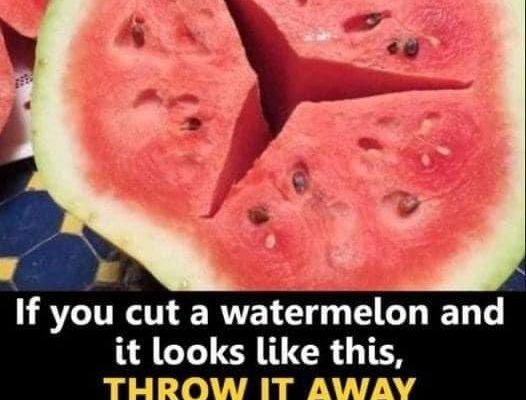Why You Should Always Check Your Watermelon for Cracks in the Rind
Making sure that your watermelon rind is intact, with no cracks, is a small step that leads to big rewards in taste and quality.

When it comes to selecting the perfect watermelon, appearances can be deceiving. That lush green exterior might promise sweet, juicy goodness inside, but there’s a critical detail that often goes unnoticed until it’s too late: cracks.
These seemingly harmless fissures on the surface of a watermelon can indicate deeper problems that affect both taste and freshness. Here’s why it’s crucial to always check for cracks in your watermelon before bringing it home.

What Cracks on a Watermelon Indicate
Cracks on a watermelon can be a telltale sign of its freshness (or lack thereof). A fresh watermelon typically has a smooth, firm rind without any blemishes. Cracks can develop over time as the fruit ages or undergoes stress during growth, transportation, or storage. These cracks can allow bacteria and other contaminants to enter, leading to the fruit spoiling faster—and potentially even leading to food poisoning. By inspecting for cracks, you can be more confident that you’re selecting a watermelon that is at its peak freshness and safe for consumption.
Poor Flavor
A watermelon’s flavor is directly influenced by its ripeness and freshness. Cracks in the rind not only compromise freshness but also affect the distribution of sugars and juices within the fruit. When a watermelon develops cracks, it loses moisture through them, leading to a dry and less juicy interior.
Shortened Shelf Life
Watermelons are relatively perishable fruits that require proper storage conditions to maintain their quality. Like most fruits, they go bad in warmer conditions, but it has also been argued that storing them in your fridge can strip the watermelons of some of their nutrients. Cracked watermelons are more susceptible to decay because they are more exposed to the air and contaminants. Even if a cracked watermelon appears intact on the outside, the compromised rind allows for quicker moisture loss and microbial growth, slashing its shelf life.
Reduced Nutritional Value
Watermelons are not only delicious but also packed with essential nutrients like vitamins A and C, plus antioxidants like lycopene. Fresh, intact watermelons retain their nutrient density, offering maximum health benefits with every juicy bite. A cracked watermelon, however, does not share the same nutrient content as a fresh one. By avoiding cracked watermelons, you ensure that you’re getting the most nutritional value out of this refreshing fruit.

Annie Schlechter
Tips for Choosing a Perfect Watermelon
-
Inspect the Rind: Look for smooth, firm skin without soft spots or cracks.
-
Check the Weight: A ripe watermelon should feel heavy for its size, indicating a sweeter, juicier fruit.
-
Tap Test: This popular method involves tapping the watermelon lightly; a ripe one will produce a deep, hollow sound.
-
Find the Field Spot: A spot on the underside of the fruit is a mark of how long the fruit spent under the sun. A creamy yellow spot means the watermelon has been allowed to sit in the sun and ripen.



